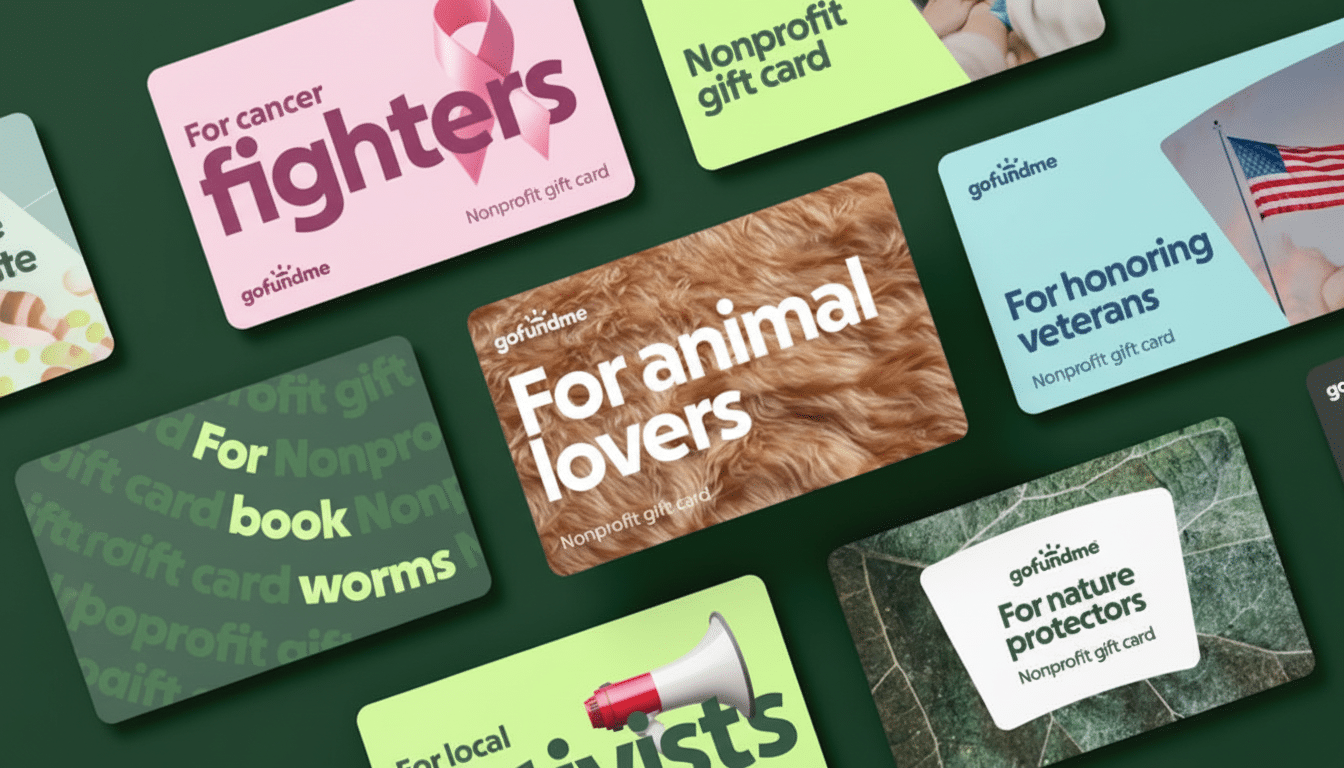GoFundMe is wading further into philanthropy infrastructure with a new product that allows people to buy digital gift cards for giving to charity. Priced at $5 and up, they come in holiday and cause-based themes, and the money goes through GoFundMe’s no-fees, no-strings Giving Fund — the company’s donor-advised fund that is free of fees.
How the Gift Cards Work and What to Expect
GoFundMe’s version, for its part, is more like an injection of value into the receiver’s own personal Giving Fund when claimed rather than the cookie-cutter gift cards you’re used to. From there, the recipient can give immediately or allow those dollars to sit in the account and grow tax-free until selecting a charity. The charitable tax deduction goes to the buyer, not the recipient at checkout—standard DAF treatment in the U.S.

Recipients can select from about 1.4 million nonprofits in GoFundMe’s directory, which run the gamut from local food banks and youth programs to animal welfare groups and global disaster-response organizations. Themed cards (like Christmas, Hanukkah and Ramadan but also causes for animal lovers, cancer support and nature conservation) are available.
The offer is both positioned for gifting events and as a lightweight on-ramp to organized giving. For families, it’s an easy way to get kids and teenagers involved in philanthropy; and for friends and colleagues, it spares them another generic present while ensuring that their gift goes to a cause they select.
Why It Matters For Donors And Nonprofits
DAFs have surged in U.S. philanthropy. The National Philanthropic Trust finds that grantmaking from DAFs has exceeded $50 billion annually the last few years, with payout rates remaining above 20% for over a decade. But stock-backed traditional DAFs will typically have high minimums and administrative fees that leave smaller or casual givers sitting on the sidelines.
By packaging a fee-free DAF into a mass-market gift card, the site lowers the barrier for participation and gains potential access to new donors. It also has potential to move more year-end generosity into structured giving vehicles, where balances can be strategically assigned between multiple charities instead of being spent all in one go.
The timing coincides with the peak of charitable activity.
GivingTuesday’s total in the United States has totaled roughly $3.1 billion in recent years, according to the nonprofit that started it. Giftable DAF credits might harness some of that energy by getting donors who receive the certificates to think in terms beyond just a single day of giving.

GoFundMe also offers a scale reference: The company says that campaigns on its site have raised over $40 billion so far. It also recently launched GoFundMe Pro, a suite geared at nonprofits that comes with AI technology to simplify donor outreach — signs the company is investing across the entire fundraising stack.
Where It Fits in the Market and How It Compares
Charity gift cards are not new; companies like GlobalGiving, TisBest and Charity On Top have been in the business for years. GoFundMe’s advantage is in distribution and name recognition. Millions of people already know the brand name for giving, and the company’s built-in DAF wallet allows a seamless transition between gift redemption and recurring donations.
One significant difference: GoFundMe’s charitable gift cards are for I.R.S.-qualified nonprofits, not personal fundraisers. That divide is significant when it comes to compliance and donor expectations. And it acts as a bridge from GoFundMe’s person-to-person campaigns and institutionalized charitable giving without mixing the two.
Fees Transparency and Safeguards for Charitable Cards
On the DAF side, GoFundMe bills Giving Fund as fee-free, a valuable distinction. Like other digital transactions, payment processing fees may still apply at purchase, and standard vetting requirements do not change the fact that grants are awarded only to qualified organizations. Transparency about who donated what, confirmed grants and where the money ends up will be important for trust.
Since balances can sit in a DAF indefinitely, the service’s reporting on redemption rates and time-to-grant will be a significant measure of real-world impact. Donors also tend to demand fast money activation, especially during emergencies or pressing community needs.
What to Watch Next as GoFundMe Scales Gift Cards
The key signals to monitor are the average amount of funds loaded onto gift cards and redemption rates, as well as whether recipients load their own money on the card before handing it off — signs not just of substitution but also incremental generosity. Corporate gifting and employee-engagement programs could also further distribute the product if features like bulk purchasing and reporting materialize.
If GoFundMe can flip gift card recipients into active DAF users who grant to multiple charities on more than one occasion, it will alter how casual donors plan their giving. For nonprofits, it could also mean more consistent, varied support — not just a seasonal bump.

